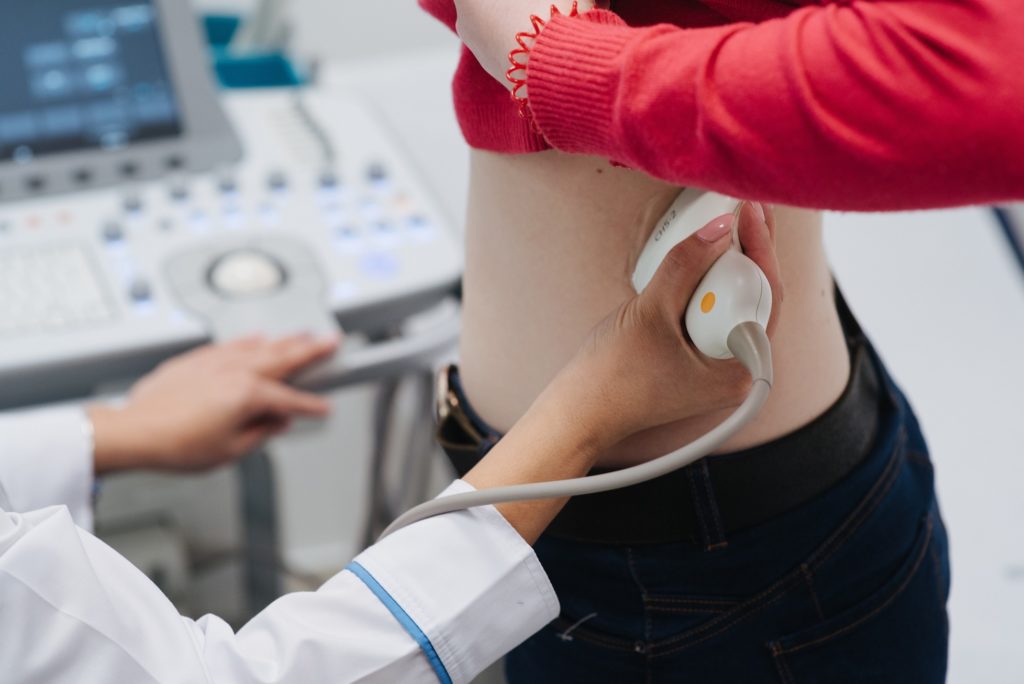
Abscess of the kidney
Renal abscess and renal carbuncle pus foci in the kidney. An encapsulated pus focus in the kidney tissue is referred to as renal abscess. This can be localized in different areas and different cause. In case of repeated Occurrence or multiple abscesses can be removal of the affected kidney is necessary. Naturopathy, in particular, offers treatment options to the development of other purulent foci to prevent.
Table of contents
What is a kidney abscess?
An abscess is fabric encapsulated suppurative focus in the body. He can lie, for example, as a furuncle, directly under the skin. In principle, can form Abscesses but also in any other area of the body. Multiple Abscesses, unite it is called a carbuncle. An abscess in the kidney, it is referred to as renal abscess. It can be localized in different sites inside the renal capsule, renal cortex, Renal medulla, and renal pelvis. He is outside of the renal capsule in the kidney to surrounding kidney fat capsule, this is called a perinephritischem abscess. He rises through the gap, the kidneys enveloping Gerota’s fascia into the Retroperitoneum, it is called a para-nephritic abscess. The contents of a renal abscess enters the bloodstream, it threatens to be particularly dangerous and life-threatening complication of blood poisoning (Sepsis).

Cause
A renal abscess is often formed as a result of an ascending urinary tract disease, such as a bladder infection (cystitis) or pyelonephritis (Pyelonephritis). Is conducive to the emergence of in addition, with existing kidney stones (Nephrolithiasis) and urinary tract stones, which can lead to a urinary traffic jam. More the urinary outflow obstructive risk factors for malformations in the urinary tract, urethral strictures, prostate enlargement, and scarring and tumors. Also about the Blood path interspersed with bacteria from a remote Infection sources (e.g., skin infections) can cause a renal abscess that is localized, often only in the area of the renal cortex. Here, in particular, bacteria such as Staphylo – and streptococci are involved.
Ascending urinary tract infections are caused by pathogens (usually intestinal bacteria such as Escherichia coli) that enter through the Opening of the urethra in the urinary tract and from there to the top spread. In the bladder they can cause a bladder infection (cystitis). You rise through the ureters up, it can lead to a Urinary tract infection. They penetrate to the kidney, they can trigger a kidney inflammation (Pyelonephritis). From this as a complication of a purulent renal abscess can arise.
Complaints
Since the renal capsule is only a little stretchy, and very sensitive to pain, can be renal abscesses can be very painful. A renal abscess occurs often with significant flank pain that may radiate to the abdomen or back above the waist. It is not uncommon to redness, and pressure sensitive to pain, swelling, and bulges. Add to that a high fever and chills. Also fatigue, loss of appetite, Nausea, vomiting and headache appear. In the case of an abscess in the kidney, the urine is clouded often by the in the urinary tract urgency, pus, milky, sometimes the urine may also contain blood. The most dangerous complication of a renal abscess, blood poisoning (Sepsis), which if left untreated can lead to death within a short time. The symptoms of a kidney abscess are often those of a renal pelvis inflammation (Pyelonephritis) are very similar. You should always be taken very seriously and lead to a prompt visit to the doctor.

Diagnosis
In addition to medical history and physical examination, various blood and urine tests can help to detect a kidney abscess and the responsible pathogen. An ultrasound examination (ultrasonography) of the kidney and its surroundings allows the detection and localization of one or of several Abscesses. And modern radiological imaging methods such as computed tomography (CT) and magnetic resonance imaging (MRI) can provide information about the type, place, location, size, shape and accessibility of a renal abscess.
Treatment
Renal abscesses must be consistently treated. Are usually used antibiotics. Outpatient is done usually by taking the medication (oral) and in-patient intravenously. Important for a success of therapy is that it is possible as quickly as possible, to identify the for a renal abscess, the infectious agent responsible. Then you can choose the antibiotics for the therapy. Thus, the use of broad-spectrum antibiotics can reduce the resistance can be promoted.
In the case of larger renal abscesses, medical therapy alone is not enough. Therefore, the Abscesses may be relieved with a diameter of more than three centimeters by a single or repeated puncture or a temporary Drainage of the pus. The puncture needles and drainage tubes from the outside to Bring in through the skin into the tissue is carried out with local anaesthesia under us or CT control. This procedure interventional radiology is not sufficient, then large Abscesses need to be removed by open surgical. In cases where it is not possible, large Abscesses heal and the inflamed kidney is severely damaged, it may even be their removal (nephrectomy) is required.
The treatment of a renal abscess usually takes two to three weeks and often requires a hospital stay. You can extend to weeks, if as a complication of Sepsis (blood poisoning) occurs.
At-risk groups
Particularly susceptible to urinary tract infections and also kidney abscesses people with a weakened immune system. A special danger is the potential of the treatment with so-called immunosuppressants. These are drugs that are used to prevent unwanted reactions of the immune system to suppress. This happens, for example, in the case of various autoimmune diseases, Organ and tissue transplants and for severe allergic reactions. Another group at risk are catheters, patients with long-term, intensive-requiring and dialysis requiring patients, diabetics, patients with valvular heart disease and endocarditis, and intravenous drug users.
Pension
A targeted Preventive (prophylaxis) against recurrence of renal abscesses is not possible. However, the appearance of renal abscesses is favored by urinary tract infections such as bladder inflammation (cystitis) and kidney inflammation (Pyelonephritis). And, therefore, against this infections the recommended Hygiene and prevention measures can also contribute to reduce the risk of development of renal abscesses.
Important contributions in this direction can also make the Natural medicine. Because accompanying to abscess treatment and after the acute phase, many natural remedies are, to de-acidify remaining toxins auszuleiten, body tissues, the immune system to stimulate or direct anti-inflammatory and stimulates the blood circulation on the kidneys. The dark-field diagnostics, followed by milieu therapy offer, in addition to the classical rejection method, for example, a homeopathic Constitution therapy, complex homeopathics, and various Teedrogen. (jvs,ivd)
(Image 1: Christoph Droste/pixelio.de)